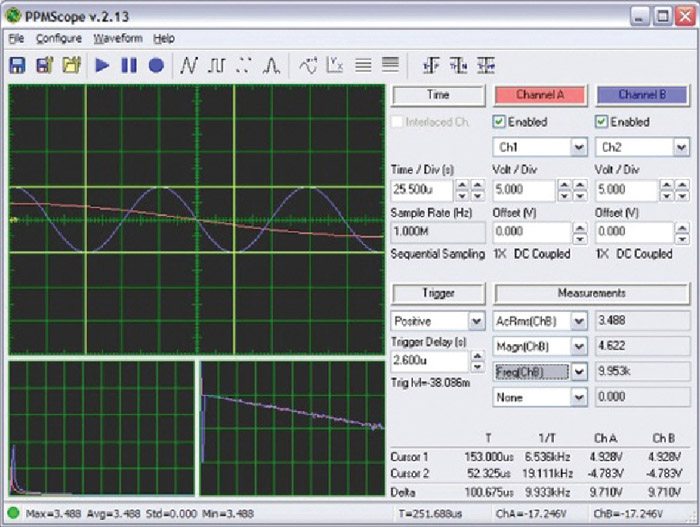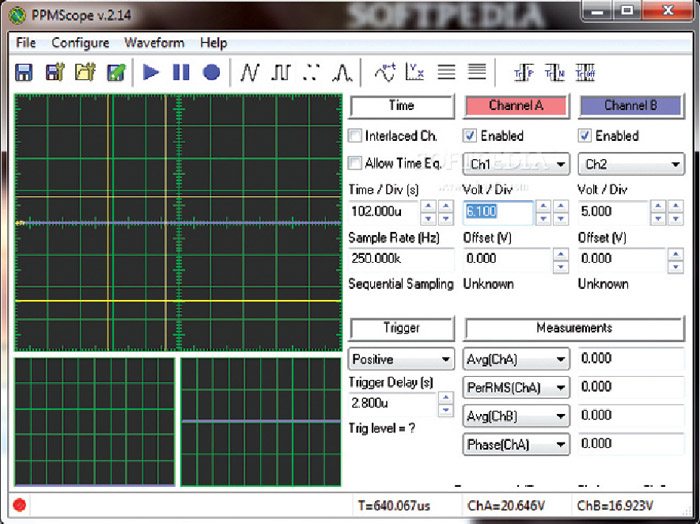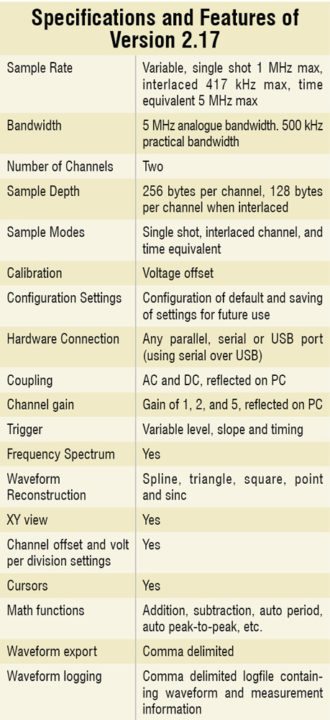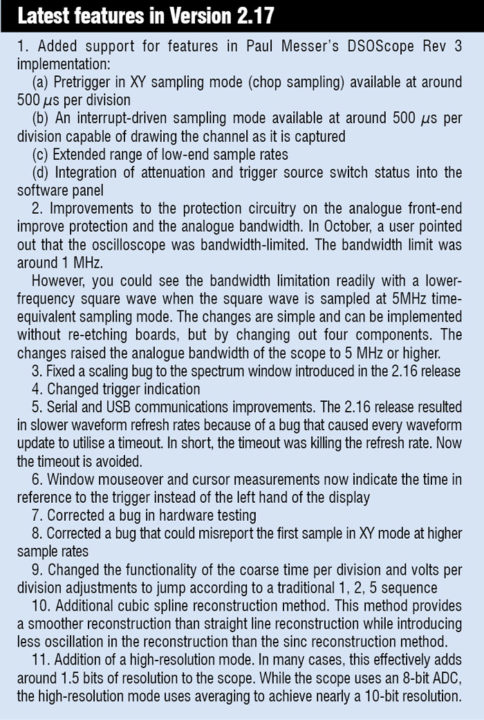PPMScope is a do-it-yourself (DIY) oscilloscope that has an open source design. It was designed to be a project that can be constructed by any electronics hobbyist, without too much of effort.

Design
The design of PPMScope is a compromise between features and cost. That is why this scope is aimed at those engineers who find full-fledged oscilloscopes too expensive for their liking but at the same time require an oscilloscope to debug their designs or test signals.

Since this is an inexpensive design of an oscilloscope, there are certain limitations to what the oscilloscope can do. For instance, the bandwidth is lower than of a commercial scope, so its use is limited to 500kHz and below signals. Its sample buffer is also smaller than of a commercial scope but is good enough to handle most oscilloscope functions.


This version of the oscilloscope is based on the PIC16F877A microcontroller running with a 20MHz clock. The maximum sampling rate is 1 MHz, with a sampling mode of 5 MHz equivalent. It supports USB, serial and parallel ports.
Jonathan Weaver, who created this tool for general use at his home, made the tool available for anyone who would benefit from his software and schematics. Interfaces include knobs and switches on the box, and also through a PC program written in ‘C’ for Windows.
Working
The scope connects with your Windows computer and communicates with the OS to display the captured waveform in both time and frequency domains. It combines a high-frequency analogue stage along with an AC/DC coupling and three gains, a MAX118 digital-to-analogue converter, a trigger circuit, a PIC16F877A MCU and some PC interfacing hardware. Latest board layouts and datasheets of the various components are available at: http://jonw0224.tripod.com/ppmscope.html
To download the latest version of the software: click here
The author is a tech correspondent at EFY Bengaluru







